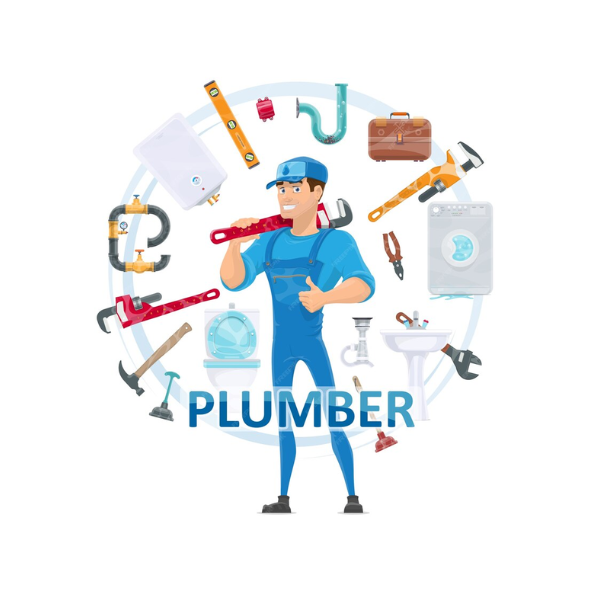Ever walked into a plumbing shop and felt right at home? That’s the vibe a website should have. For plumbers, the online space is a digital workshop. Visitors land there needing quick fixes or reliable service. The goal? Guide them from “I need help” to “Let’s book that job.” This guide breaks it down step by step. Small changes make a big difference between a bounce and a booked appointment. With help from a website development company like Epistic, plumbers can get this right.
Think about it. People with a leak grab their phones first. A clunky site sends them to the next option. A smooth, easy-to-use one builds trust fast. Epistic specializes in crafting websites that focus on real people with real problems. No fluff, just fixes. Ready to create a site that works? Let’s get started.
Why a Great Website Matters for Plumbers
Plumbing issues don’t wait for business hours. Neither should the website. Most searches for “emergency plumber near me” happen on mobile devices. That means first impressions form on small screens, often in a hurry.
A user-friendly site does more than look good. It answers questions fast. “Can you fix my water heater today?” “What’s the cost?” Clear answers keep visitors engaged. Epistic builds sites that turn clicks into calls and reduce lost leads.
Conversion isn’t magic. It’s about removing obstacles. Slow load times or confusing menus kill momentum. A site that converts turns curious clicks into loyal customers. Local searches drive most plumbing traffic. Optimize for “plumber in [your city],” and inquiries roll in. But it’s not just about showing up. It’s about closing the deal. A well-designed site, crafted by experts like Epistic, makes that happen.
Step 1: Nail the Basics of User-Friendly Design
Start with the foundation. Good design feels intuitive, like turning a familiar faucet. For plumbing sites, that means clean lines and no surprises. Plumber Website Design & Development begins with these essentials, and Epistic knows how to deliver.
Choose Colors That Inspire Trust
Blue is a go-to for plumbing sites. It evokes water, calm, and reliability. Epistic uses deep blues with white accents for a fresh look. Avoid bright reds that they feel urgent but can overwhelm.
- Stick to three or four colors max.
- Pair blues with grays for buttons, neutrals for backgrounds.
- Ensure high contrast for easy reading.
This setup works across devices, making visitors feel secure from the start.
Pick Fonts That Read Easily
Sans-serif fonts like Arial or Open Sans work best on screens. They’re clean and easy to scan. Epistic recommends 16px for body text that is big enough for mobile.
- Use bold headings, 24-32px.
- Limit to two font families.
- Avoid fancy scripts except for logos.
Line height at 1.5 keeps text airy. Short lines, 50-75 characters wide, guide the eye smoothly.
Layouts That Flow Like Water
Grid-based layouts keep things organized. Hero sections lead: Big image of a fixed pipe, bold headline like “24/7 Emergency Plumbing for [City].” Epistic crafts these to grab attention instantly.
- Stack sections: Services, testimonials, contact.
- Use white space to avoid clutter.
- Responsive grids: Three columns on desktop, one on mobile.
Users skim. Bold key phrases. Use icons: a wrench for repairs, pipe for installs. Visuals speed up decisions.
Step 2: Make It Mobile-First Because That’s Where Customers Are
Mobile isn’t optional. It’s the main event. Most web traffic comes from phones. Epistic ensures plumbers don’t miss these leads.
Responsive Design Done Right
Responsive means one site, many views. CSS media queries adjust layouts automatically. Epistic’s designs resize images and reflow text seamlessly.
- Testing on real devices and emulators isn’t enough.
- Ensure buttons are big enough for thumbs.
- Avoid separate mobile sites that confuse search engines.
Unified designs keep things simple and effective.
Speed Up Load Times
Fast sites convert. Slow ones don’t. Epistic compresses images to under 100KB and uses WebP format for sharp results. Lazy-loading images below the fold makes pages load quicker.
- Minify CSS and JavaScript.
- Use caching plugins for static files.
- Aim for under two seconds load time.
HTTPS builds trust and is free via Let’s Encrypt. Optimize for 3G for rural customers.
Touch-Friendly Navigation
Big buttons rule mobile. 48×48 pixels minimum. Epistic’s menus collapse to a hamburger icon but keep “Call Now” visible.
- Use sticky headers for phone and services.
- Add swipe-friendly carousels for testimonials.
- Keep forms short with auto-fill enabled.
One-tap call links cut friction and boost bookings.
Step 3: Craft Content That Speaks to Real Problems
Content isn’t filler. It’s the conversation starter. Epistic designs content to be relatable to people who want solutions, not sales talk.
Headlines That Hook Instantly
Strong headlines grab attention. “Leaky Faucet Driving You Crazy? We Fix It Fast.” Specific and benefit-focused.
- Use numbers: “5 Signs Your Pipes Need Attention.”
- Try questions: “Water Heater Dead? Here’s the Fix.”
- Keep under 10 words.
Front-load keywords like “emergency plumber [city]” for search engines.
Body Text: Short, Scannable, Helpful
Keep paragraphs to three lines. Use bullet points for services:
- Drain cleaning in under an hour
- No-dig pipe repairs
- Eco-friendly water heaters
Epistic adds value with tips: “Winterize pipes to avoid bursts.” This shows expertise.
- Use a friendly, direct voice: “Tired of drips? Get it fixed.”
- Explain terms like “hydro-jetting” simply.
- Avoid jargon to keep it accessible.
Images and Videos That Show, Don’t Tell
High-res photos of before-and-after jobs build credibility. Epistic includes team shots, smiling faces, and tools ready.
- Use short videos: “How we unclog sinks.”
- Embed YouTube for fast loading.
- Skip stock images, add real photos to connect better.
Add alt text for SEO: “Plumber fixing kitchen leak.”
Step 4: Navigation That Guides Without Confusing
Lost visitors leave. Simple menus keep them found. Epistic builds top navs: Home, Services, About, Contact, Blog.
Keep Menus Lean
Five items max. Use dropdowns for sub-services:
- Residential: Leaks, Installs
- Commercial: Backflow, Maintenance
Breadcrumbs show the path: Home > Services > Emergency Repairs. Makes backtracking easy.
- Add a search bar for “water heater.”
- Place it top-right for visibility.
Footer: The Safety Net
Pack footers with essentials:
- Address and hours
- Social media links
- Privacy policy
Epistic adds a mini-sitemap. On mobile, stack vertically.
Step 5: Calls to Action That Push for the Next Step
CTAs turn browsers into bookers. Epistic places them everywhere, subtle but clear.
Buttons That Beg to Be Clicked
“Get Free Quote” in green, standing out against blue. Place above the fold and at section ends.
- Make them urgent: “Call Now or 24/7 Service.”
- Track clicks with analytics.
- Keep forms to three fields: Name, phone, issue.
Short forms reduce abandonment.
Pop-Ups Done Right
Exit-intent pop-ups: “Leaving? Grab 10% off first service.” Time them for engaged scrollers.
- Use chat widgets: “Hi, need a plumber?”
- Quick replies boost conversions.
- Avoid annoying visitors with early pop-ups.
Step 6: Build Trust Because Plumbing Is Personal
Leaks hit home. Visitors need to know the plumber delivers. Epistic ensures sites reflect reliability.
Testimonials That Feel Real
Use real quotes with photos and names. “Saved our basement from flooding here in 20 minutes!” Add star ratings.
- Short video testimonials work best.
- Place mid-page, after services.
- Rotate fresh ones monthly.
Certifications and Badges Front and Center
Show Gas Safe or EPA logos. Epistic places licenses in the header.
- Offer guarantees: “100% Satisfaction or Free Redo.”
- Display badges prominently.
- Update certifications yearly.
These ease customer worries.
About Page: Humanize the Team
Stories sell. “Started in a garage, fixing neighbors’ taps.” Add team bios with hobbies.
- Show photos of the crew at work.
- Highlight local roots.
- Keep it relatable, not corporate.
Builds the “local pros you know” feel.
Step 7: Service Pages That Target Specific Needs
Generic pages don’t work. Epistic creates one per service focused and clear.
Structure for Skimmers
H1: “Emergency Drain Cleaning in [City].”
- List benefits: “Stop backups fast without any mess.”
- Detail process, tools, pricing ranges.
- End with CTA: “Schedule Now.”
Add Local Flavor
Mention neighborhoods: “Serving [Suburb] and beyond.”
- Embed maps for easy location.
- Use keywords: “Affordable drain cleaning [city].”
- Keep tone friendly and local.
Step 8: Homepage: Your Digital Front Door
The homepage sets the tone. Epistic designs it to welcome with impact.
Hero Section Magic
Full-width image: Plumber at work, smiling. Overlay text: “Reliable Plumbing for [City] Homes Call Today.”
- Make phone number clickable.
- Keep headline bold and clear.
- Add a “Book Now” button.
Quick Wins Below
Use a service icons grid:
- Leaks
- Clogs
- Heaters
Link to service pages. Add a trust bar: “5-Star Rated | 24/7 | Licensed.”
Step 9: Integrate SEO Without the Hassle
SEO brings eyes to the site. Epistic weaves it in naturally.
Keyword Basics
Target: “Plumber [city],” “water leak repair.”
- Use titles: “Top [City] Plumbing Services.”
- Write meta descriptions with benefits.
- Keep keywords natural, not stuffed.
Local SEO Boosts
Claim Google Business Profile with photos and reviews. Epistic ensures it’s updated.
- List in directories: Yelp, Angi.
- Ensure consistent name, address, phone.
- Add schema markup for services.
Content for the Long Game
Blog: “How to Spot a Slab Leak.”
- Target long-tail keywords.
- Update posts quarterly.
- Link to service pages.
Drives organic traffic over time.
Step 10: Tools and Platforms to Build It
DIY or pro? Epistic offers solutions for both.
WordPress: Flexible and Free
Use themes like Divi or Astra plumber-ready.
- Add Yoast for SEO.
- Use Elementor for drag-and-drop.
- Customize for speed.
Epistic tailors WordPress for plumbers’ needs.
Wix or Squarespace: Quick Starts
Templates are mobile-ready. Good for beginners.
- Limited SEO control.
- Easy to set up.
- Great for small budgets.
Epistic can enhance these platforms.
Hiring Help
Epistic specializes in plumber websites. Budget: $2K-10K for custom. They deliver results that convert.
Measuring Success: Track What Counts
Launch isn’t the end. Analytics show what’s working.
- Use Google Analytics for traffic and bounces.
- Aim for bounce rates under 50%.
- Try heatmaps to see click patterns.
Epistic helps plumbers track form fills and calls. Adjust monthly.
Test CTAs: “Book Now” vs. “Free Quote.” Data drives results.
Common Mistakes to Avoid
- Flashy animations slow mobile.
- Keyword stuffing sounds fake.
- Hidden contact info loses leads.
Epistic keeps designs real and simple.
Wrapping Up
A user-friendly plumbing site isn’t optional. It’s essential. Start small. Audit the current site. Add one CTA today. Watch the difference.
Plumbing solves problems. The website should too, for visitors needing help. Build it right with Epistic, and customers find their way. Questions? Epistic’s ready to help.



